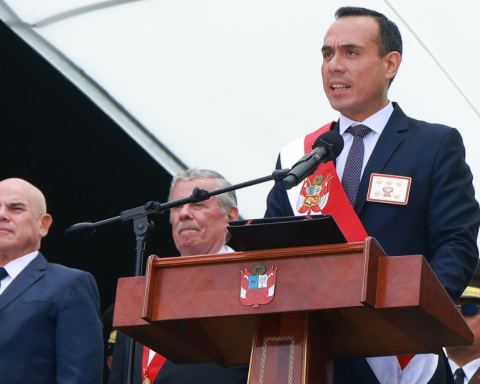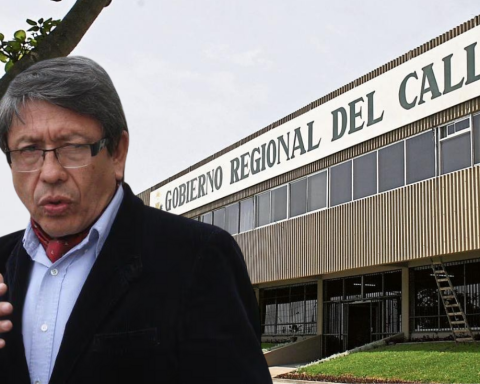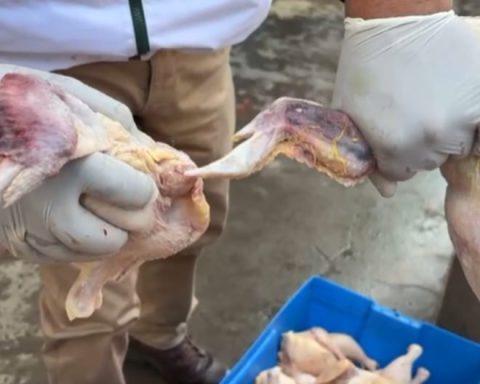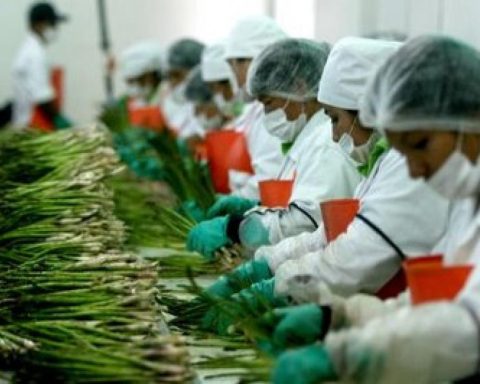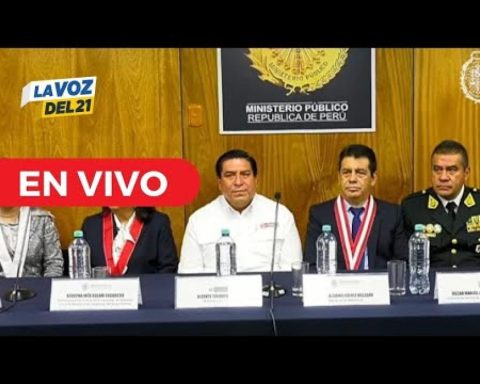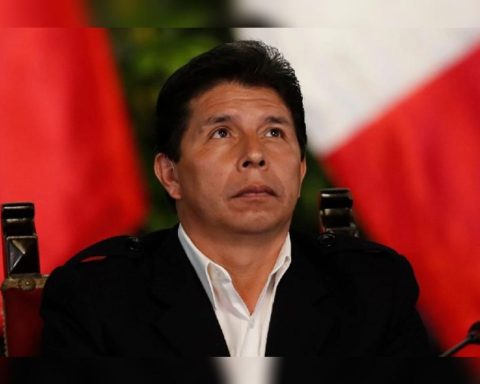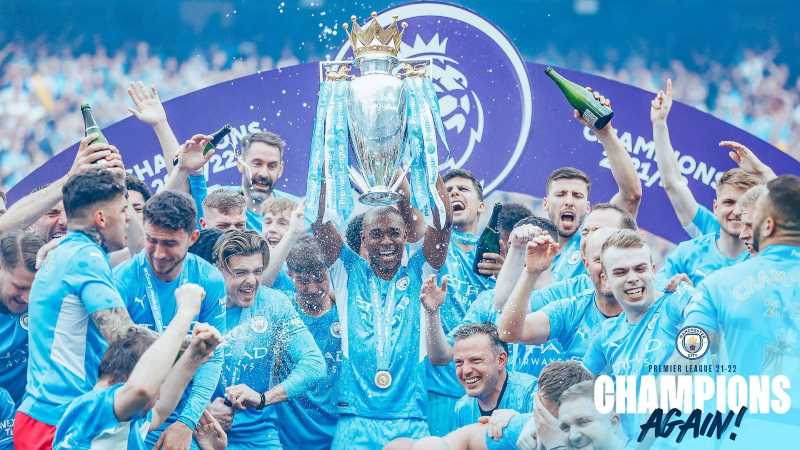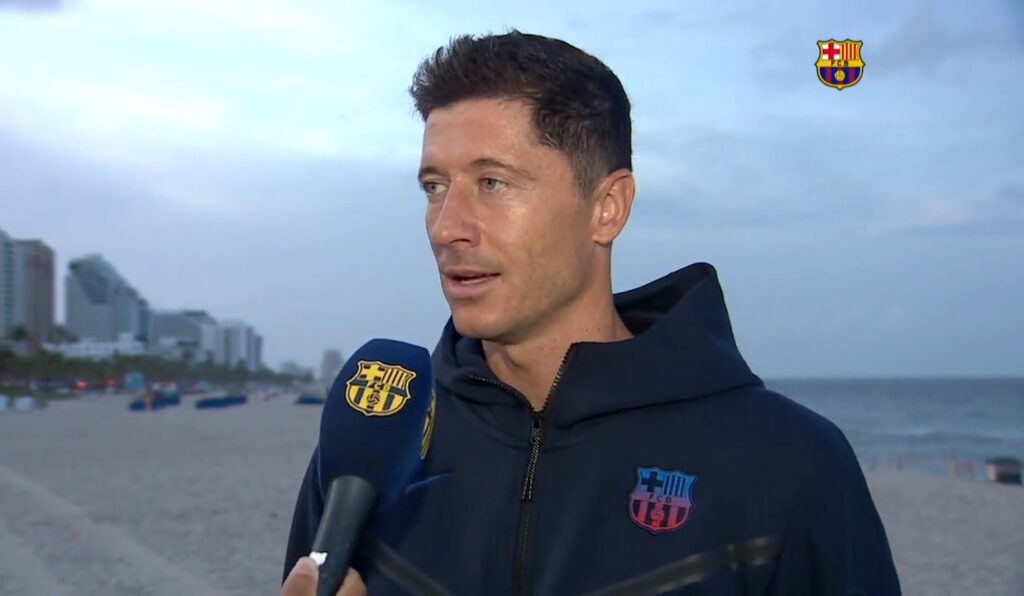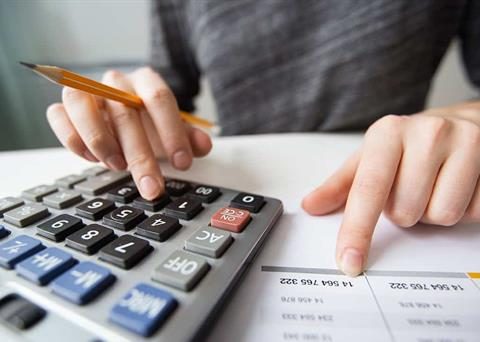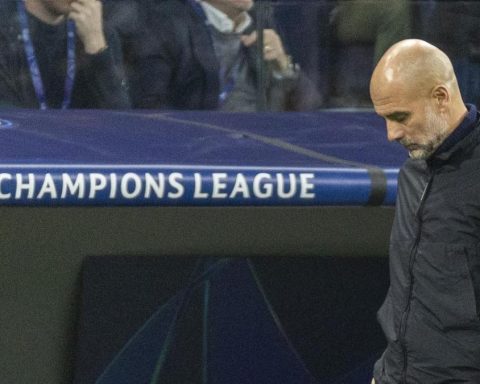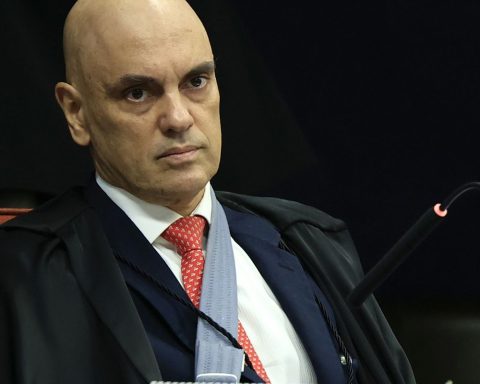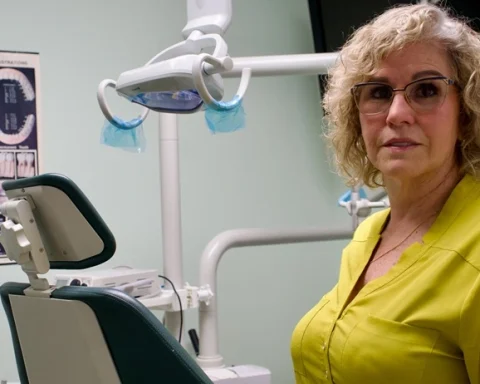Six weeks it took two human rights lawyers, in Lima and London, to find the box with the remains of the murdered students of the University the cantuta exhumed in Cieneguilla, who were sent to England for DNA testing, and had been missing for nearly 29 years.
The end of the thread was between the copies that okay removed from the file at the end of 1993, shortly before the jurisdiction military win the competition match. The victims’ lawyer, Gloria Cano, found them in the middle of last March in the institution’s archive. It was the first clue to find answers to a question that had been asked for years: what happened to what they took?
Search. Gloria Cano, from Aprodeh, found the clues. Photo: Marco Cotrina/The Republic
“The Criminal Chamber that heard the La Cantuta case commissioned the EPAF, in 2006, to make an evaluation of the remains, and they realized that they were not complete. Gisela (sister of one of the victims) recalled that the best preserved had been sent to London for examination, but no one knew what had happened to them,” says Cano.
As at the beginning of 1994 the case went to court, they thought that the results should have been sent there, but there was nothing about it.
YOU CAN SEE: Remains of missing La Cantuta students found in London
“In its sentence (against members of the Colina Group), the Criminal Chamber indicated that they officiated to various institutions, but no one reported what happened to said remains. The Inter-American Court of Human Rights also mentioned the issue”, he remarks. Nevertheless, for years neither the military jurisdiction nor the Public Prosecutor’s Office gave them a reason for what had happened with the box sent to England.
He comments that it was only known that the box had been sent to the London Hospital, until at the beginning of this year the prosecutor Luis Valdivia, who has led the new exhumations in Cieneguilla, gave another clue.
Key code. Prosecutors and experts sealed the box that in October 1993 was sent to England. Photo: diffusion
“He told me that in the book by Dr. Víctor Cubas (prosecutor who handled the case in 1993) he reveals that when he arrived in England he changed laboratories,” he says.
YOU CAN SEE: Remains of La Cantuta students found in London
For this reason, Cano began to review the old files they had on the case. “I found a report from Dr. Cubas; another of the then prosecutor of the Nation, Blanca Nélida Colán; and a document where it is stated in which laboratory the bone remains were received”, he reveals.
So he contacted lawyers from Redress, a London-based human rights organization fighting torture, to help find out what happened.
simple search
Upon receiving the documents, Redress’s legal counsel, Chris Esdaile, began digging. He started with the simplest and Googled the name of the lab that received the remains: Forensic Science Service, Birmingham.
“I found out that this institution had closed in 2012, but that all its files and materials had been transferred to the Forensic Archive Ltd. On April 26, I contacted them, and about six weeks later they told me that they had located documentation and a box with material associated with the case”, he details.
YOU CAN SEE: Prosecutor extends 5 days exhumation in La Cantuta case
This British institution, which is also in Birmingham, provides a service to the judicial system so that they have access to forensic files and folders of historical cases.
They explained that the State has to request the information and return the remains because they handed them over to do the tests.
In addition, Esdaile found on Linkedin the British official who received the remains: Colin Kimpton. “I contacted him and he confirmed that he received the material, but he stated that he had nothing to do with the analysis of it. I guess he remembered it because he had to go to the Peruvian Embassy in London, which shouldn’t be common”, she says.
Chris Esdaile found the box. Photo: diffusion
YOU CAN SEE: Justo Arizapana: what is the story of the key witness in the La Cantuta case?
The British lawyer warns that it was the responsibility of the State to follow up on the results and return the remains to their relatives. “The steps we took should have been done by the State. They were not complicated things, nor did they require specialized knowledge, ”he emphasizes.
With the information obtained by Esdaile, the way has been paved for the Prosecutor’s Office through the Peruvian Foreign Ministry to officially request access to the results
why england
Former prosecutor Víctor Cubas Villanueva was in charge of the exhumations carried out in 1993 on the La Cantuta case, first in Cieneguilla, four months later in Huachipa.
History. Former prosecutor Víctor Cubas shows the remains sent. Photo: Marco Cotrina/The Republic
He relates that his team included several doctors who, based on scientific publications, recommended that they be sent abroad to undergo DNA tests.
YOU CAN SEE: La Cantuta case: after 29 years, relatives supervise the restart of the search for relatives
“They recommended Dr. Aníbal Escalante, who was head of medical genetics at Rebagliatti Hospital. They summoned him because he was the only specialist in that field, in state entities”, he specifies in the face of the questions that his appointment had for being the husband of the then president of Inabif, Ana Kanashiro, close to the circle of former president Alberto Fujimori, sentenced years later as mediate author of the crimes of La Cantuta.
At that time there were not many places where DNA tests could be carried out, and that the best options were Japan, the United States and England.
“I went to the house of the Japanese ambassador, and through an interpreter they indicated that they were able to take the exams. But days later an official told me that they would do it because of Fujimori’s direct relationship with that country”, he recalls.
Cubas proposed to the National Prosecutor that they do it in the United States, since the FBI offered to do it for free. “Doctor Colán did not want to. Without further explanation, she told me: ‘As long as I’m here, there will be no intervention from the United States in this case,’” she reveals.
YOU CAN SEE: The search for 5 students from La Cantuta resumes
Years later, Colán was convicted of cover-up, failure to file a complaint, and illicit enrichment for not investigating Fujimori’s former adviser, Vladimiro Montesinos.
Finally, England was chosen. They took blood samples from the relatives of the victims and in their presence they selected the bones in the best condition, which could be used for identification. Escalante took everything to the London-based Peruvian embassy, where he was handed over to a Birmingham Forensic Science Service official.
“As the money he took was not enough, he left 12,000 dollars in the embassy, and with the report he made, he managed and managed to carry out the analysis of a single remainder, which cost 35,700 soles,” says Cubas.
a single result
In the book that the former prosecutor published on his investigations of La Cantuta, he gave an account of the resolution of the Nation’s Prosecutor’s Office No. 1335-93-MP-FN of November 9, 1993, which ordered the analysis.
YOU CAN SEE: La Cantuta case: Prosecutor resumes search for remains of 5 of the 10 disappeared
The document authorized the British laboratory, through the ambassador to Peru, Keith Haskell, to carry out “a test on a sample of bones found in the Cieneguilla graves with the highest possible degree of precision, including the sequential ordering of the DNA extracted from the blood samples from living relatives.
He adds that for this, the money that Escalante left in the Peruvian embassy in London must be used as part of the payment. There is no more official record that confirms whether the money was completed, but Dr. Cubas had information that it had happened and that the results even arrived in August 1994, when the case was already under military jurisdiction.
“Unofficially, I found out that one of the bones was compatible with the DNA sequence of the student Felipe Flores Chipana, one of the five young people still missing.”
Cubas revealed to La República that Gonzalo Chávarry, who was then Secretary General of the National Prosecutor’s Office, told him so and is now being investigated for his links with ‘The White Necks’.
YOU CAN SEE: La Cantuta case: forensic diligence begins tomorrow in the Cieneguilla grave
The current prosecutor of the Nation, Liz Benavides, has the power to ask the British laboratory for the results and the box they jealously guard, and thus put an end to the anguish of the relatives of La Cantuta who continue to search for their loved ones.
Relatives urge the State to request a report from England
Relatives of the nine students and the teacher from La Cantuta executed by the Colina Group on July 18, 1992 were summoned by Criminalistics in October 1993 in order to take blood samples to accompany the remains of Cieneguilla that they would send to England.
Gisela Ortiz and Raida Cóndor, sister and mother of two students, recalled that in that diligence they saw a table where the bones were that could be used for DNA testing.
In Criminalistics. They took blood samples from Raida Cóndor and the other relatives. Photo: diffusion
Both demand that the State immediately request the report and the box that is in custody in England. In addition, they request that the analysis be carried out in an international laboratory.
YOU CAN SEE: La Cantuta Case: Prosecutor’s Office initiates Forensic Intervention Plan in Cieneguilla grave
Chronology
July 1993. Calcined bones of students from La Cantuta in Cieneguilla are exhumed after the revelation of Sí magazine.
October 1993. A box containing part of the family’s remains and blood samples is sent to London for DNA testing.
November 1993. They exhume a complete body and other remains in Huachipa.

